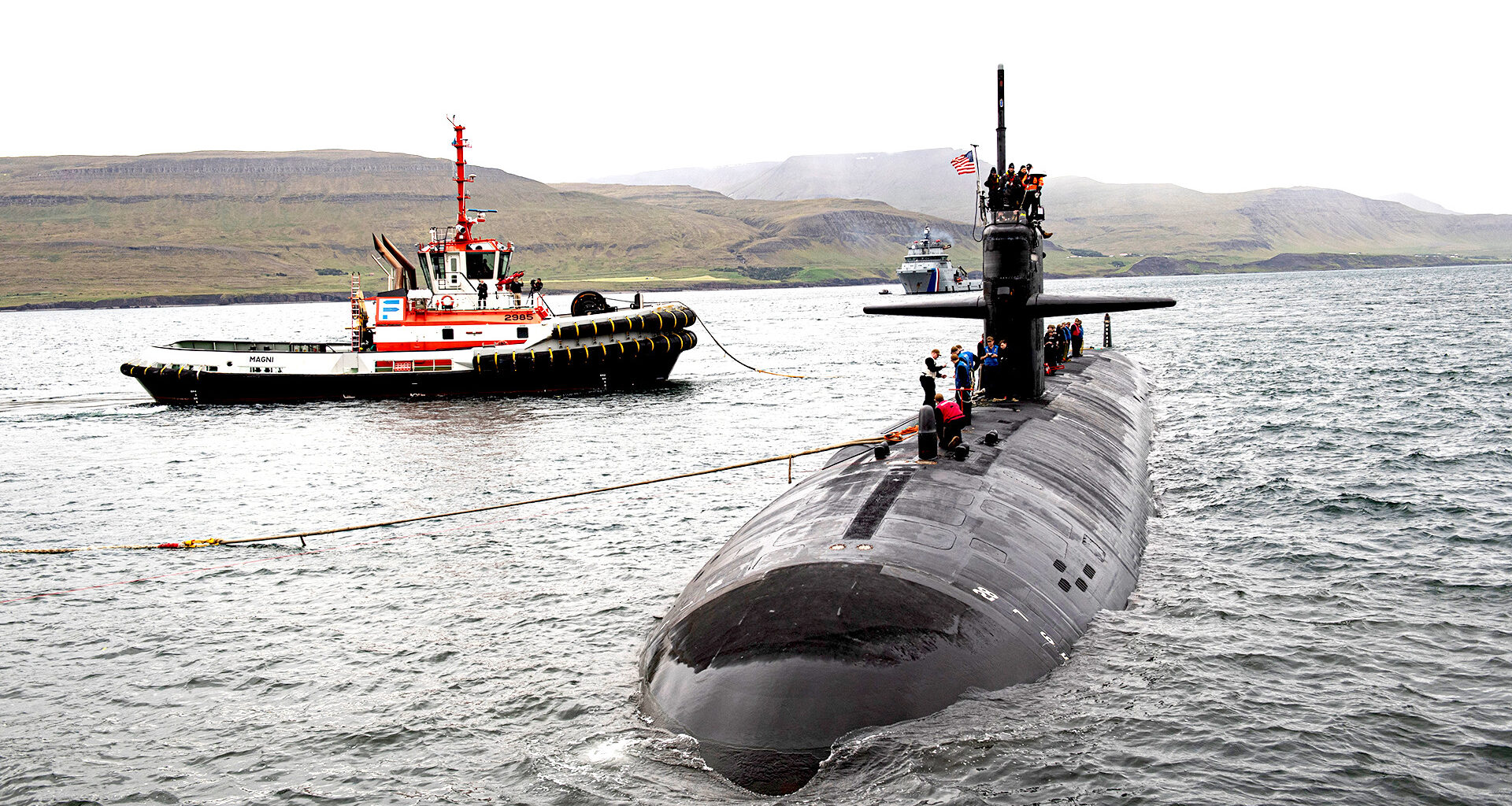The Los Angeles class fast attack submarine USS Newport News pulled into Reykjavik, Iceland, on Wednesday, the first port call for a nuclear-powered submarine to that island nation. The visit comes amid growing tensions in the Arctic and in a key location where Russian submarines routinely transit.
Iceland only began allowing nuclear-powered submarines to enter its territorial waters in 2023.
“Today’s port visit is a pivotal moment, underscoring our unwavering commitment to collective defense and Arctic security,” U.S. Navy Adm. Stuart B. Munsch, commander of U.S. Naval Forces Europe-Africa (NAVEUR/NAVAF), said in a statement. “Our submarine forces are advanced and vital to ensuring the security of our nations and our Alliance – patrolling the depths and providing a deterrent in an increasingly complex and contested world.”
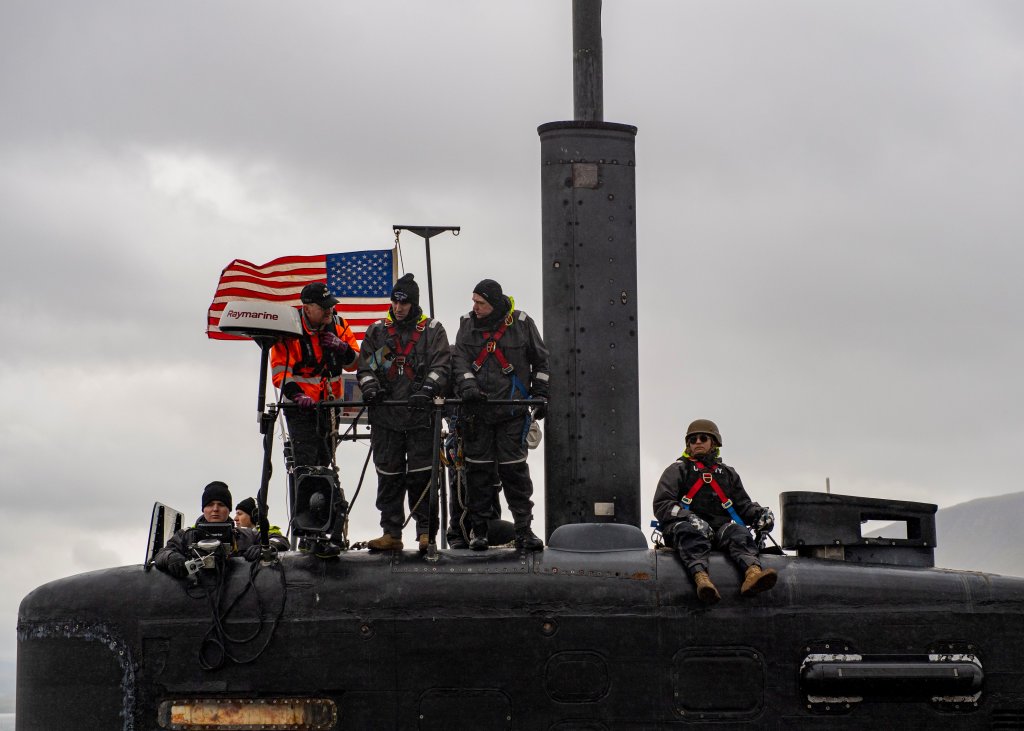 Sailors aboard the Los Angeles class fast-attack submarine USS Newport News (SSN 750) stand watch as they pull into Reykjavík, Iceland for a scheduled port visit, July 9, 2025 (USN)
Sailors aboard the Los Angeles class fast-attack submarine USS Newport News (SSN 750) stand watch as they pull into Reykjavík, Iceland for a scheduled port visit, July 9, 2025 (USN)
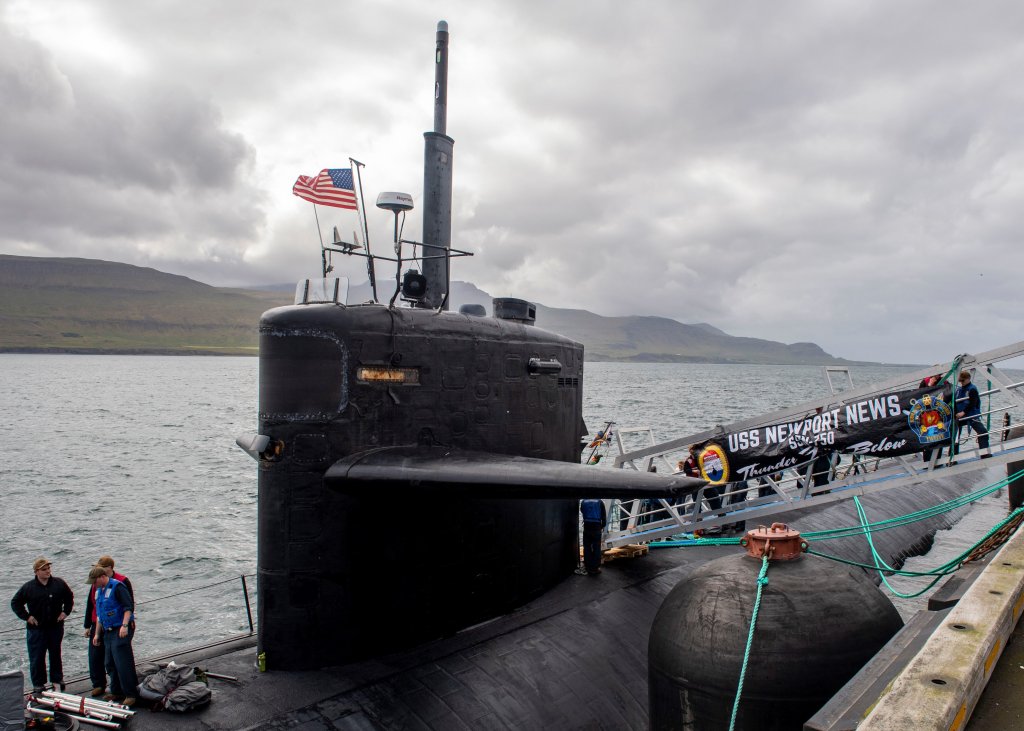 The Newport News is moored in Reykjavík, Iceland. (USN)
The Newport News is moored in Reykjavík, Iceland. (USN)
The Arctic region is increasingly becoming a potential flashpoint. It has seen significant investment in military resources, especially by Russia. There is also growing concern over a recent Russian buildup along the border with Finland. In addition, there has also been a substantial increase in Russian submarine activity in this region over the past several years.
“The United States and Iceland maintain the shared goal of low tension in the Arctic, with full awareness of Russia’s efforts to build its military presence in the region,” Erin Sawyer, Chargé d’affaires at the U.S. Embassy in Iceland, said in a statement. “Deep coordination with our incredible NATO ally Iceland to achieve this historic visit demonstrates our commitment to freedom of navigation and the security of our allies in the region.”
Given its location, Iceland has long served as a strategic outpost to the U.S.
In 1954, during the Cold War, the U.S. Air Force 57th Fighter Wing was forward based in Keflavik Air Base, where it provided 24-hour air defense. That continued throughout the Cold War. In addition, faced with the rising Soviet submarine threat, U.S. maritime patrol aircraft (MPA) were deployed there during this period as well, with the P-3 Orion being a fixture in the skies there. After a lull following the end of the Cold War, the mission continues with P-8A Poseidon multi-mission aircraft detachments rotating in and out of Keflavik. NATO fighters also provide air defense for the country, which has no fighters of its own.
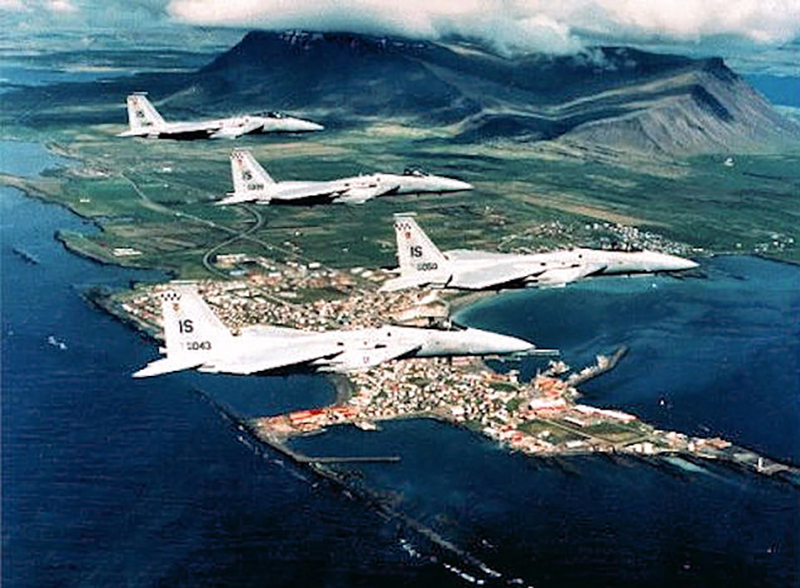 F-15s of the 57th FW over Iceland during the twilight of the Cold War. (USAF)
F-15s of the 57th FW over Iceland during the twilight of the Cold War. (USAF)
The island is located in the middle of what is known as the Greenland, Iceland, UK (GIUK) gap, less than 200 miles south of Greenland and a little more than 500 miles north of Scotland. Russian submarines from the Northern Fleet in Murmansk travel through both sides of that gap. Murmansk is home to some of Russia’s most capable submarines, like the Yasen-M class nuclear-powered cruise missile carrying Kazan. Iceland is a key chokepoint from which to track Russian submarines before they have a chance to disappear into the Atlantic Ocean and potentially endanger the East Coast of the United States.
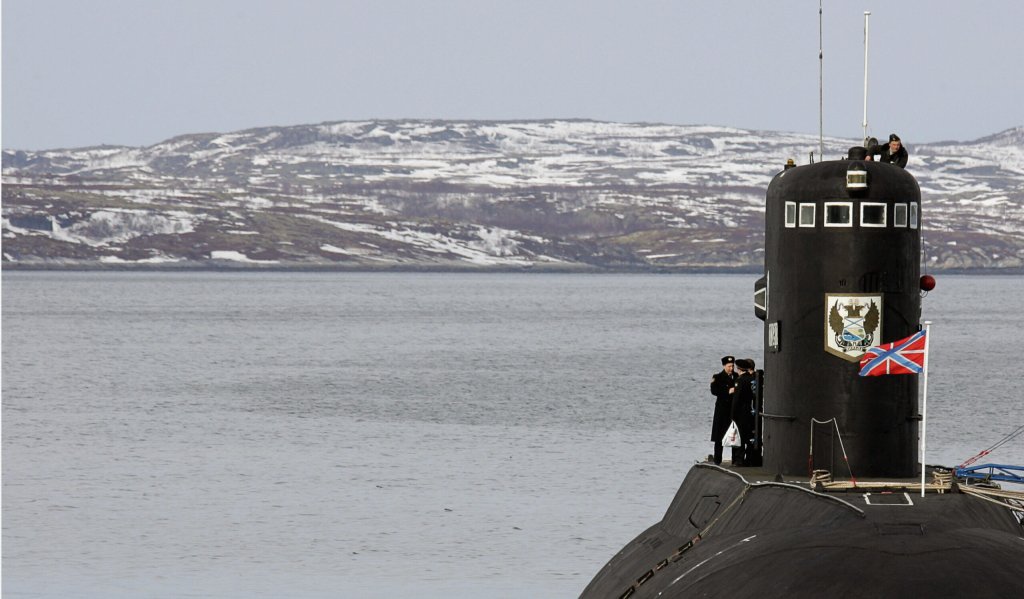 The Russian Kilo class submarine Lipetsk at Russia’s Northern Fleet base in the town of Severomorsk not far from the city of Murmansk. (ALEXANDER NEMENOV/AFP via Getty Images) A Russian submarine Project 877 submarine stands at Russia’s Nothern Fleet base in the town of Severomorsk not far from the city of Murmansk, 19 April 2007. (ALEXANDER NEMENOV/AFP via Getty Images)
The Russian Kilo class submarine Lipetsk at Russia’s Northern Fleet base in the town of Severomorsk not far from the city of Murmansk. (ALEXANDER NEMENOV/AFP via Getty Images) A Russian submarine Project 877 submarine stands at Russia’s Nothern Fleet base in the town of Severomorsk not far from the city of Murmansk, 19 April 2007. (ALEXANDER NEMENOV/AFP via Getty Images)
The importance of this gap to U.S. national security interests was underscored earlier this year by the then-NATO’s Supreme Allied Commander Europe (SACEUR) and head of U.S. European Command.
Speaking of the water and air space bounding Greenland, now-retired Army Gen. Christopher Cavoli testified before Congress in April that access to it “was absolutely critical to the United States.”
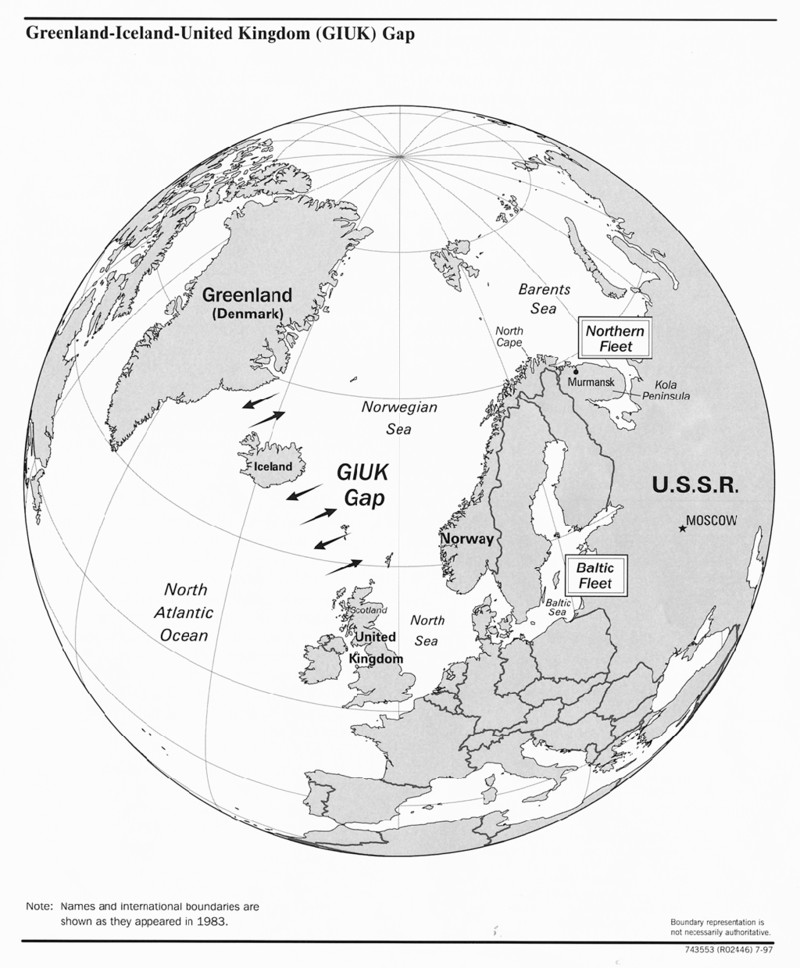 Dating from the Cold War but still relevant today, a map of the GIUK Gap. CIA.gov
Dating from the Cold War but still relevant today, a map of the GIUK Gap. CIA.gov
In addition to being equipped with 12 Vertical Launch System (VLS) tubes for firing Tomahawk cruise missiles, the conventionally armed USS Newport News can also provide critical underwater surveillance and anti-submarine and anti-surface warfare capabilities. Having U.S. boats make service calls to Iceland “contribute[s] to strengthening continuous and effective submarine surveillance of allied countries, which ensures better situational awareness and increases the security of underwater infrastructure such as submarine cables in the waters around Iceland,” the Icelandic Foreign Ministry (MFA) said.
There is growing alarm by Icelandic officials about the protection of their undersea cables, driven in large measure by a series of suspected Russian sabotage incidents last year in the Baltic Sea. Those incidents led to NATO creating its Baltic Sentry effort to protect power and communications cables running under those waters.
The ability to make service calls at Icelandic ports gives the Navy a convenient support point for submarine operations in the Arctic. The next closest facilities able to host U.S. nuclear submarines are Her Majesty’s Naval Base Clyde in Scotland and Norway’s Grøtsund harbor, north of the nearby city of Tromsø. Naval Base Clyde is about 700 miles south of Iceland, while Grøtsund harbor is about 900 miles to the northeast.
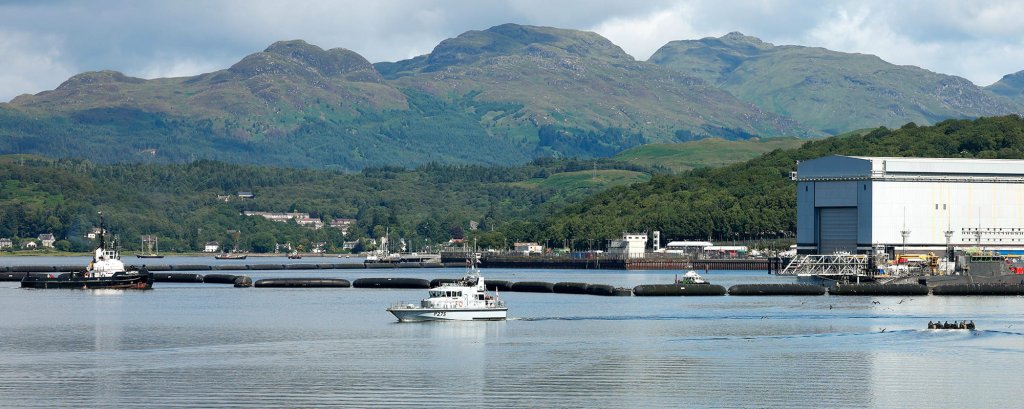 Her Majesty’s Naval Base Clyde in Scotland can support nuclear submarine visits. (Leading Photographer Bill Spurr)
Her Majesty’s Naval Base Clyde in Scotland can support nuclear submarine visits. (Leading Photographer Bill Spurr)
While this is the first port call to Iceland, U.S. submarines have made six previous visits to the island nation’s territorial waters since the MFA “announced in 2023 that such submarines would be permitted to make brief stops off the coast of Iceland to take on board and replace part of the crew,” the ministry explained.
“The frequency of visits will depend on the need at each time,” the MFA added. “The…procedures were prepared in 2023 in close cooperation between the [U.S. and Iceland] and are based on similar regulations in neighboring countries.”
The nuclear fast attack submarine’s high-profile visit to Iceland is another indicator of U.S. plans to leverage the strategic potential of the country. B-2 Spirit stealth bombers had a similar moment in 2019 when they first used Iceland as a forward staging point. At the time, this was not just rare for Iceland but also the B-2 force which had been previously relegated to operating out of a tiny handful of bases with advanced infrastructure. That has changed in years since, with the B-2 force expanding its ability to operate out of austere locations.
Nonetheless, Iceland is playing an increasingly prominent Cold War-like role in the extremely complicated security picture abroad and is yet another port — and perhaps the most relevant of all — where American nuclear submarines can call on if need be.
Contact the author: howard@thewarzone.com
Howard is a Senior Staff Writer for The War Zone, and a former Senior Managing Editor for Military Times. Prior to this, he covered military affairs for the Tampa Bay Times as a Senior Writer. Howard’s work has appeared in various publications including Yahoo News, RealClearDefense, and Air Force Times.
